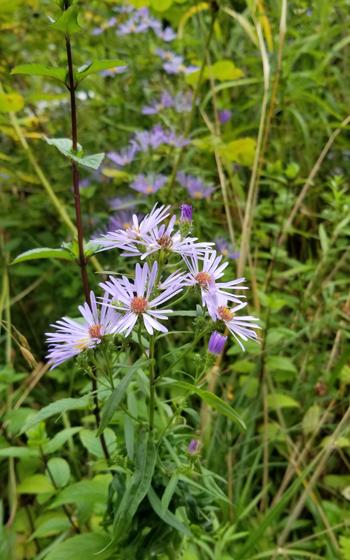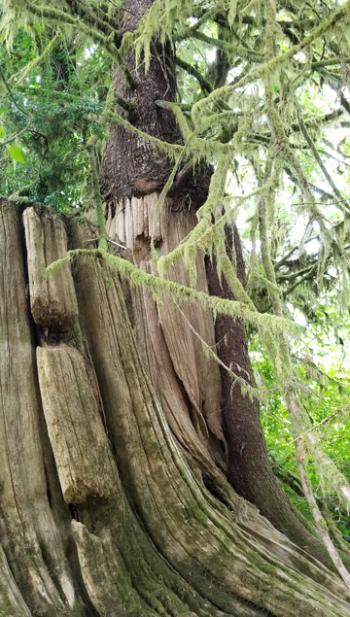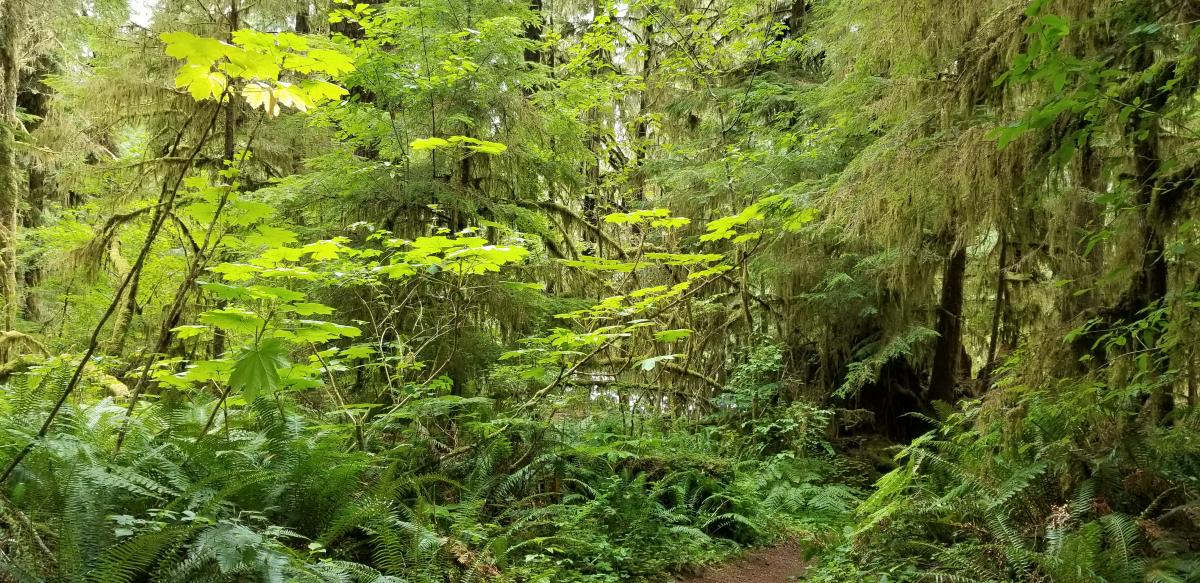
It was a foggy, drippy early morning when I decided to break away for a hike. The experience of hiking in Olympic National Park’s temperate rain forest was beyond exquisite. It was soul quenching.
Taking steps into this rainforest was like walking into a giant acoustic tile. The ground was a bit springy, no sound except the occasional drop of water on a leaf and my breath expanding as it took in cleaner air.

Did you know that the Pacific Northwest Rain Forest is home to over 66% of the world’s temperate rain forests? So, what constitutes a temperate rain forest?
- Mild, moist climate affected by the ocean.
- Over 100 inches of rain and fog drip per year.
- Multilayered forests growing primarily needle-leaf trees.
- Abundant mosses, lichens, fungi and epiphytes.
- Large amounts of dead and fallen trees.
Each of the features above are essential to the health of our planet. While moving along, I had a pronounced sense of my small place within the web of life—and respect for this forest.
* (Differences between Tropical and Temperate Rainforests can be found here).
Planting Life
I was not expecting such an abundance of wildflowers. We were long past our wildflower season on the central coast of California. I especially liked seeing all the pollinator friendly skunk cabbage and lungwort while walking in what some refer to as the ‘lungs of our planet’.
There were many giant fallen trees and trunks all around me. These trees are very inviting habitats for new plant growth. In fact, they are referred to as ‘nurse trees’- or, ‘healers of the forest’. Just another reminder of how the forest takes good care of itself without human intervention.

More Creatures in the Web
Who else lives in the Olympic Rain Forest? Well, massive elk appropriately called ‘Teddy Roosevelt’ (because he was so instrumental in saving them), black bears and mountain goats, among other small critters. In fact, mountain goats were being airlifted out of the Olympic forest to their natural habitat in the Cascades while we were there. Mountain goats, not native to Olympic, so missed the salt of their natural habitat they were bugging hikers for the salt from their sweat and urine. (Fortunately, I didn’t know this until after my hike).
Why Rain Forests are Essential
Rain forests have provided life for the 400 million years of their existence. They are essential to earth’s climate, water cycle, a huge producer of oxygen – basically, essential to our existence.
The greatest threat to rain forests? US!
Deforestation to support an ever-growing population is destroying our precious rain forest’s. Worldwide, we humans are destroying 80,000 acres of rain forest per day to meet demand for our short-term products.
If the heart breaking news of fires in the Amazon isn’t enough to move us to change our behavior, what will? Just this year 39,194 fires destroyed the world’s largest rain forest, a 77 percent increase from the same period in 2018.
Here are some ways we can help protect the web of life that we depend upon:
- Donate to Rainforest Action Network to protect an acre of the Amazonian rainforest.
- Donate to the Rainforest Trust to help buy land in the rainforest. Since 1988, the organization has saved over 23 million acres.
- Reduce your paper and wood consumption. Double-check with Rainforest Alliance that what you're buying is considered rainforest-safe. You can also purchase rainforest-safe products from the alliance's site.
- Reduce your beef intake. Beef found in processed products and fast-food burgers often comes from the land where forests have been cleared from rainforests.
- The World Wide Fund for Nature (known as the World Wildlife Fund in the US and Canada) works to protect the species in the Amazon and around the world.
- Ecosia.org is a search engine that plants a tree for every 45 searches you run.
- Explore Change.org petitions. A lawyer in Rio Branco has accumulated over 77,000 of his 150,000 signature goal to mobilize an investigation into the Amazonian fires.
- Donate to Amazon Watch, an organization that protects the rainforest, defends Indigenous rights and works to address climate change.
- Donate to the Amazon Conservation Team, which works to fight climate change, protect the Amazon and empower Indigenous peoples.
- Amazon Conservation accepts donations and lists exactly what your money goes toward. You can help plant trees, sponsor education, protect habitats, buy a solar panel, preserve Indigenous lands and more.
- Contact your elected officials and make your voice heard.
- Donate to One Tree Planted, which works to stop deforestation around the world and in the Amazon Rainforest. One Tree Planted will keep you updated on the Peru Project and the impact your trees are having on the community.
- Sign Greenpeace's petition telling the Brazilian government to save the Amazon rainforest and protect the lands of indigenous and traditional communities.
Words and images by Denise Ryan, denisearyan8@gmail.com

















